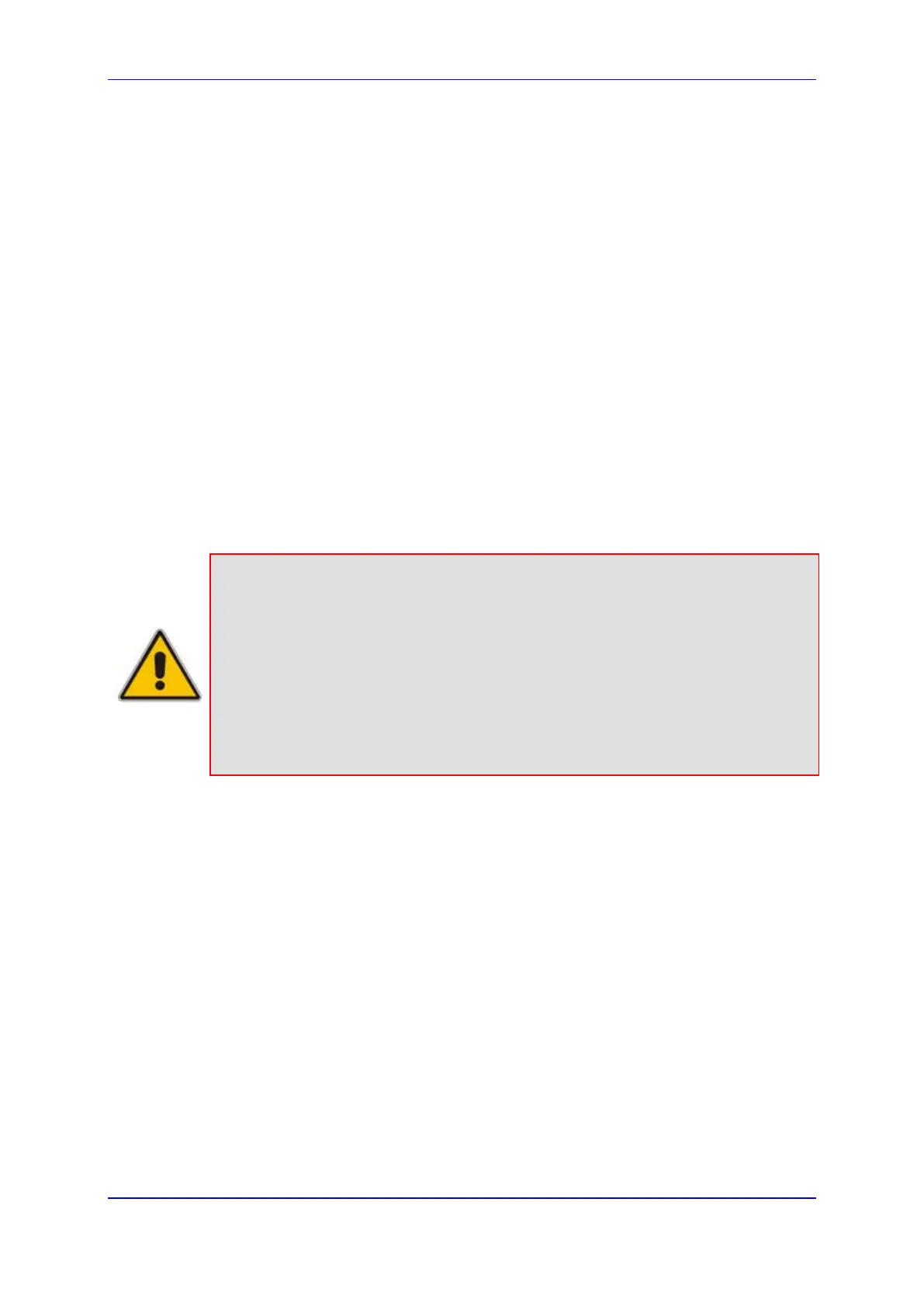Version 6.4 195 March 2012
SIP User's Manual 14. Control Network
14.3 Configuring IP Groups
The IP Group Table page allows you to create up to 32 logical IP entities called IP Groups.
An IP Group is an entity with a set of definitions such as a Proxy Set ID (see 'Configuring
Proxy Sets Table' on page 200), which represents the IP address of the IP Group.
IP Groups provide the following uses:
SIP dialog registration and authentication (digest user/password) of a specific IP
Group (Served IP Group, e.g., corporate IP-PBX) with another IP Group (Serving IP
Group, e.g., ITSP). This is configured in the Account table (see 'Configuring Account
Table' on page 225).
Call routing rules:
• Outgoing IP calls (IP-to-IP or Tel-to-IP): used to identify the source of the call and
used as the destination for the outgoing IP call (defined in the Outbound IP
Routing Table). For Tel-to-IP calls, the IP Group (Serving IP Group) can be used
as the IP destination to where all SIP dialogs that are initiated from a Trunk
Group are sent (defined in 'Configuring Trunk Group Settings' on page 253).
• Incoming IP calls (IP-to-IP or IP-to-Tel): used to identify the source of the IP call
• Number Manipulation rules to IP: used to associate the rule with a specific calls
identified by IP Group.
Notes:
• When operating with multiple IP Groups, the default Proxy server must
not be used (i.e., the parameter IsProxyUsed must be set to 0).
• If different SRDs are configured in the IP Group and Proxy Set tables, the
SRD defined for the Proxy Set takes precedence.
• You cannot modify IP Group index 0. This IP Group is set to default
values and is used by the device when IP Groups are not implemented.
• You can also configure the IP Groups table using the ini file table
parameter IPGroup (see 'Configuration Parameters Reference' on page
541).

